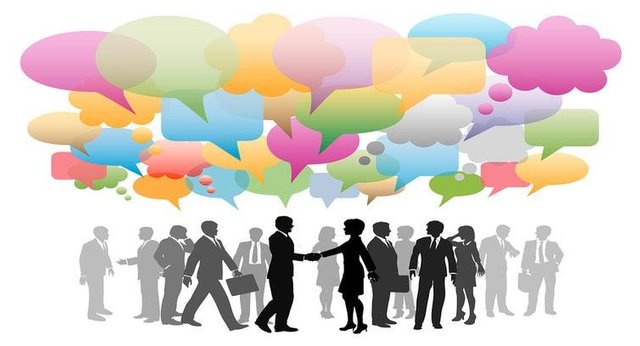Language Attitudes
In life, as we know, language was a significant part in all communication aspects. Its use hand to hand for communication tools. Besides, language also has an important part comes with the attitude of their users itself. Caused that part will defines their identity, existence, etc. In this case, language users play an important role to determine the existence of language in their community.
The word attitude is a mental phenomenon, according to Baker (1992) states that attitude is considered as mentality phenomenom which can not be examined and observed directly but it manifested in the form of action. It refers to hypothecial construct used to explain the direction and persistence of human behavior. So it can represent internal thoughts, feelings and tendencies in behavior across a variety of contexts.
When the language and attitudes combined, there's some term that need to learn, as the following definitions of attitude which is often used by the researchers in their language and attitudes research:
Allport (1935) describes attitudes as " mental or neutral state of readiness, organized through experience, exerting a directive or dynamic influence upon the individual's response to all objects and situations which it is related"
Triandis (1971) describes attitudes as "an idea charged with emotion which predisposes a class of factions to a particular class of social situations"
Based on some expert definitions above, we can conclude that attitudes means learned through socialization process which begins in early childhood. Attitude more deeply than language itself, cause it talks about acts, behavior, unconcious reaction, etc. Besides, attitude also organize with experience (Alport: 1935)
- Concept of attitudes
When we talk about attitudes, we must know that the are three concept contained to understand, such as:
a. State of readiness
Its mean Nature Interactions between the speaker to the others or their environment.
b. Not innate
It doesnt innate but it is learned based on the experiences
c. Dynamic
Attitudes come together within behavior.
So, the attitudes help people more ready to act according to certain categories and interpretations that they had already, people can learn how to show their attitudes to others, and people are having the ability to change their attitude as they want to. In the orher words, attitude leads to a tendency of react towards an object arouse the assumption whether it is positive or negative attitudes.
-Component of Attitudes
And also, if want to know more about attitudes, we should know some of component that include within the attitudes itself, such as:
Cognitive Component
Which concern to thoughts and belief.Affective Component
Which concern to feelings and emotions.Action Component
Which concern to predispose behaviors.
-Dimension of Attitudes
Lazarus (1991) stated that attitudes have the following dimenssion
Attitudes are learned
It is not inherited but it is expressed that attitudes is considered as learning result through experience and continue interaction with environment.Attitudes have reference
Attach to object such as human, opinion or idea.Attitudes are social learning
Interaction with others, home, school, public place.Attitudes have readiness to reponse
React in certain way to object.Attitudes have affective
It means feelings and affective are part of attitudes. It will be seen from choice made whether positive or negatife.Attitudes are very intensive; time dimension; duration factor; complex; evaluation; reinferred.
-Formation of Attitudes
Attitudes is associated with object, it is learned predisposition to respond in a consistently favorable or unfavorable manner with respect to a given object. In other ways, its learn from experiences. Alford (1998) stated that some of formation included within attitudes are:
Social Learning
The attitudes orientation based on classical conditioning, instrumental conditioning, and observation learning.Social comparison
The attitudes works with how to compare ourselve with the others.Generic Factors
Generic factors also may be influence general disposutions such as Biological tendencies and Socio-cultural shaping.
-The Level of Language attitudes
Receiving
Pay attention, listen the others. Its talk about how we act or react about the others, when the other talking/speech, in what term our attitudes lay, is't positife or opposite.Responding
Respond and participates. Its about our existences in social interactions. Do we have a kindness or willingness!Valuing
Idea, opinion, person. Its about our appreciation after someone did their works.Organizing
Philosophy of life. How can we manage the situation and conditions.Internalizing Values
Behavior (personal, social, emotional)
Respect others-indivudual has value system that controlled behavior. This level of attitudes comes with the truth that made us understand in and outside understanding in social interactions.
-Attitudes towards Language
Attitudes and language are the closest part that comes and out together in one action. Do we have attitudes in our language! Do we polite! Do we loyal to our language! Do we that kindness attitudes toward our first language or second or third and so on. Yes it does, we have it. Cause its defines our value toward public. But, in many conditions for nowadays, there's an exception, cause not all of us have such thats attitudes and languages.
Sometimes, we forgot our identity by forgetting the good attitudes towards our language.
Meanwhile, the attitudes towards language can be concluded that when people belief that language has benefit to them, they use it. When people feel like to a variety of languages, they use it. People belief and feeling towards a particular language will make them react to use the language or to learn it. Thats component always comes together, but sometimes conversely. Cause like the proverb said"different pond, different fish".
Finally, it was along long chapters after chapter when we talk about language, and in this first section of my summary. Above all there are three important part that included in language attitudes, as the linguist expert said,
Garvin & Mathiot (1968) in Language Attitudes and Its Characteristic, there are three characteristics of positive and negative language attitudes:
- Language Loyalty
- Language Pride
- Awareness of the Norms
These three features of language attitude relate to the basis of people in choosing a language from variety of language that will be used for their communication.
In fact, do we have all these three characteristic! Such loyal to our language identity (native), do we use it in our daily communication! Or how truly we use it! Cause that will defines our loyal to a particular language, is it our first language or second, its depend on us. And also, prideness, how far we proudly use our language, such as accent, dialects, and more kinds of it. Last, its about the norm, the rules of particular language that we used. Cause all languages in the world has their norms. It just need their speaker to learn and use it in good ways.
Language and attitudes defines our identity which show who we are. So, just make it a good one to show the best part in our language used.
References:
Garvin, P.L., Mathiot, M (1968) Language and Culture. Paris-The Hague
Alford, B. and Beck, A. (1998) Cognitive Theraphy. New York-Guildford Press

